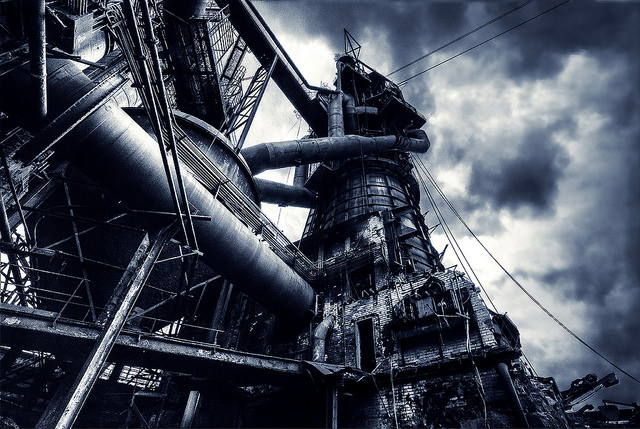
Beijing keeps saying it will rein in unneeded steel production, but the numbers don’t lie.
Global steel overcapacity, brought to you by the Chinese government, is becoming more and more of a news item these days. Hillary Clinton’s talking about it. Thousands of German steelworkers are protesting it. Even the party organs in China are acknowledging it!
It’s a bit of an item in Washington, too, where the American steel industry has spent the past few days unloading on government officials. Steel executives and workers alike have been testifying about the enormous strain on steelmaking that China’s overcapacity and subsequent steel dumping has caused. Thousands of steelworkers have been laid off, businesses may go belly up, and communities from Oregon to Alabama are feeling significant pain. Meanwhile, China has repeatedly promised to will rein its steel mills in, and it simply hasn’t done so yet.
No, really. China has promised to stop upping steelmaking capacity and production a lot, but instead of doing that, it … ups steelmaking capacity and production. So the United Steelworkers (USW) went through the trouble of tracking official Chinese government pronouncements on this topic, and the subsequent upticks in capacity and production show how seriously China is taking the problem that it’s dumping on the world.
To wit:
-
In 2009 China announced plans to cut its steel production from the previous year’s output of 521 million tons to 460 million. The plan was to let production rise from that 460 million-ton baseline to 500 million tons in 2011.
But production instead jumped to 577 million tons in 2009, and passed 700 million tons in 2011.
-
In the meantime, China announced in 2010 its plans to halt any new steel capacity expansion projects. China’s existing capacity that year was already at 800 million tons.
But by 2011, an additional 60 million of capacity per year had been installed!
-
Then, in 2011 the Chinese government released its 12th Five Year Plan, in which it specifically ID’ed excess capacity in the steel sector as a problem to be addressed.
But in 2012, China had added another 96 million tons worth of annual capacity.
-
In 2013, the Chinese government again acknowledged steel capacity problem and laid out plans to dial it back.
But by 2014, another 70 million tons of capacity were online.
China had a significant amount of steel capacity a decade ago. But now, Reuters notes it’s at 1.1 billion tons a year, and it actually produced more than 803 million tons in 2015. That’s roughly half of the world’s production of steel. Some analysts estimate another 100 million tons are produced illegally in China each year.
What’s the lesson to be learned? Don’t believe China when it pledges to curb overcapacity. It hasn’t in the past and won’t in the future, not on its own. And at the very least, America certainly shouldn’t grant China market economy status, which would make it much harder to make China pay up for dumping its goods in the United States. Does anyone in the world think China is a market economy?
As USW President Leo Gerard said in a hearing this week:
It’s time for our negotiators to recognize that China will not make the dramatic changes needed unless there is a real cost. And that cost has to be in the form of access to foreign markets, not simply in how others may perceive them.
Read the whole report on China's broken overcapacity promises here.
